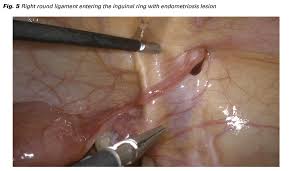Hernia repair is a surgical procedure performed to address hernias that occur when internal tissues or organs push through a weak spot in the abdominal wall. While the procedure is generally straightforward, the postoperative experience can vary based on factors such as the type of hernia, surgical method used, and an individual’s health. Understanding what happens after repair can help you prepare for the recovery period.
Immediate Post-Surgery Recovery
After hernia repair surgery, patients may be monitored in a recovery area before being discharged. The duration of this recovery period can depend on whether the surgery was performed laparoscopically, robotically, or as open surgery. Laparoscopic and robotic methods often involve shorter hospital stays or can even be performed on an outpatient basis.
Patients can expect mild discomfort or soreness at the surgical site, which is typically managed with prescribed pain medications. Some individuals may notice swelling, tightness, or bruising around the operated area. These reactions are common and usually reduce within a few days to weeks. It may be possible to resume light activities soon after surgery, depending on the surgeon’s advice. Activities like walking and gentle movement are encouraged to promote circulation and reduce the risk of complications, such as blood clots.
Returning to Normal Activities
The timeline for resuming normal activities may vary. Light activities can be reintroduced within a few days, while more physically demanding tasks can require additional time. Factors influencing this timeline may include the type of hernia repaired, surgical technique, and individual healing rates.
For less invasive procedures, physical activity restrictions are often minimal. Open surgery may involve longer recovery times with activity limitations taking weeks. Heavy lifting or strenuous exercise is generally restricted for a period specified by the surgeon.
Dietary Guidelines and Digestion
Digestive habits and dietary options may change temporarily after hernia repair. Some patients may experience mild bloating or constipation due to the surgery or anesthesia. A diet rich in fiber and adequate water intake can often promote healthy digestion and reduce straining during bowel movements. Suggestions for a recovery-friendly diet might include:
- Whole grains, fruits, and vegetables for fiber
- Lean proteins such as fish and chicken, or plant-based options like lentils
- Ample hydration with water or clear broths.
Monitoring for Complications
Complications after hernia repair are uncommon but may include infection, recurrence, or issues related to surgical mesh placement. Patients should remain attentive to their body’s signals and watch for any concerning symptoms, such as:
- Severe pain that does not respond to medication
- Persistent swelling, redness, or warmth at the surgical site
- Fever or signs of infection
- Difficulty urinating or having bowel movements.
Long-Term Outcomes and Follow-Ups
Many patients achieve a full recovery after hernia repair and can return to their usual lifestyle and activities. Regular follow-up appointments with your surgeon are part of the recovery process to assess the healing progress and make sure the repair remains intact. Long-term results can depend on maintaining a healthy weight, avoiding excessive strain on the abdomen, and adhering to lifestyle recommendations provided by your healthcare team.
Take the Next Step Toward Hernia Repair Recovery
Preparing for hernia repair recovery involves understanding what to expect and following postoperative recommendations. By staying informed and proactive, you can support your healing and return to daily life with confidence. If you have specific questions about your recovery or are preparing for a repair, consult your healthcare provider for guidance based on your medical history and individual needs.


Leave a Reply